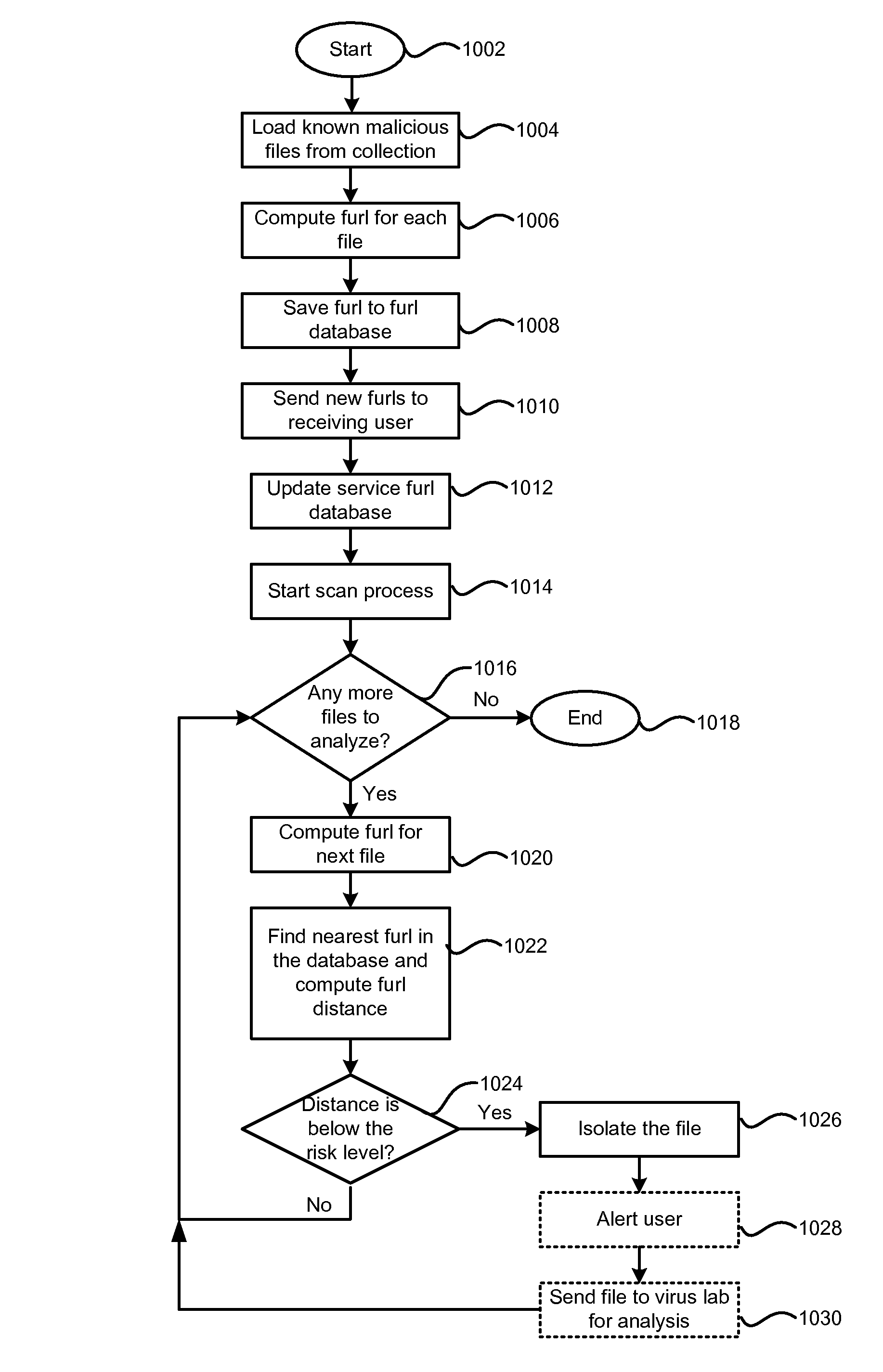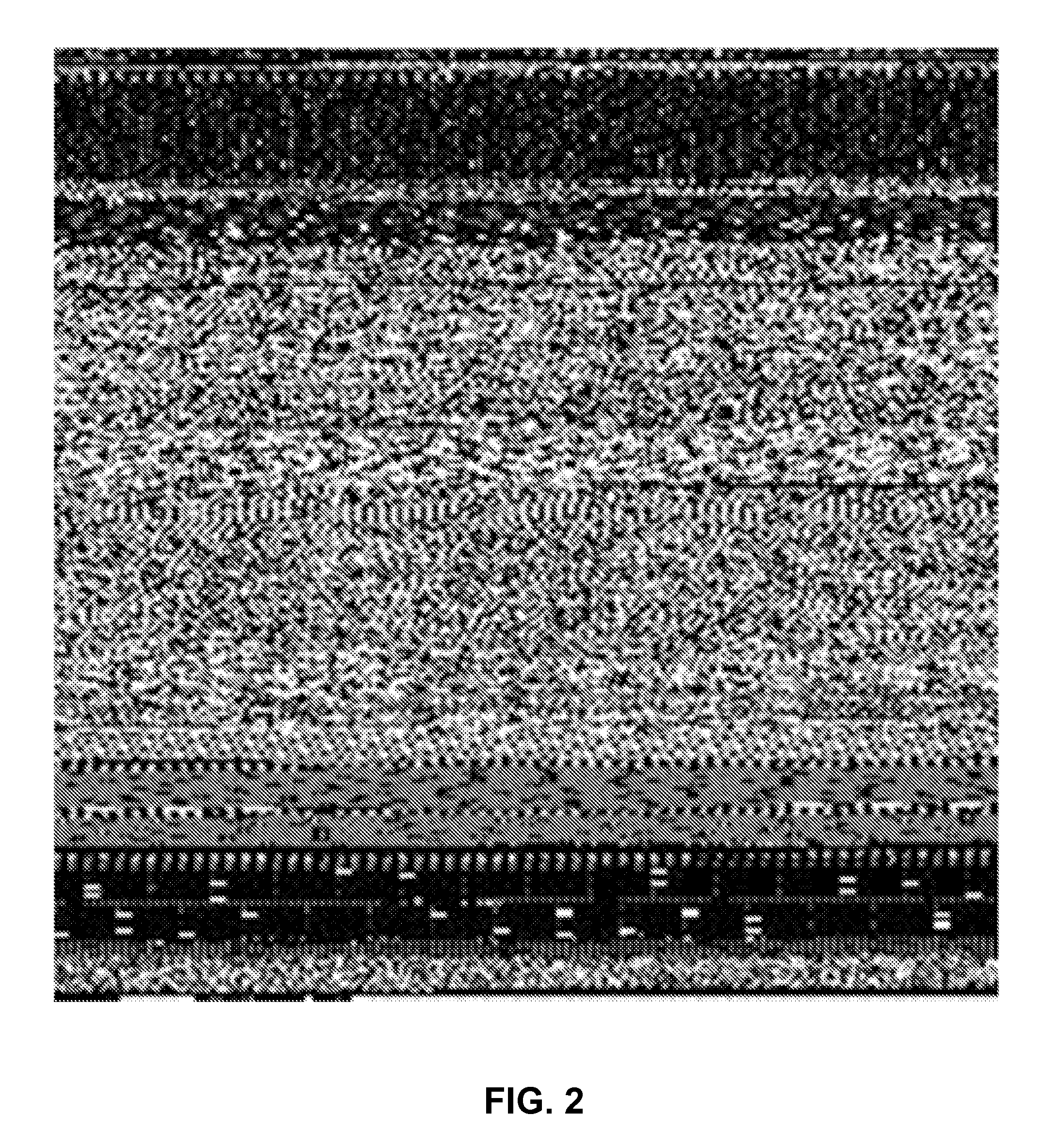Rapid heuristic method and system for recognition of similarity between malware variants
a malware variant and similarity recognition technology, applied in the field of similar recognition, can solve the problems of inability to detect malicious objects with reasonable degree of accuracy
- Summary
- Abstract
- Description
- Claims
- Application Information
AI Technical Summary
Benefits of technology
Problems solved by technology
Method used
Image
Examples
Embodiment Construction
[0042]Reference will now be made in detail to the preferred embodiments of the present invention, examples of which are illustrated in the accompanying drawings.
[0043]Generally, the discussion below is in the context of anti-virus analysis, although it will be appreciated that the invention is not limited to this application and can be used to compare data objects and files in a more general context, e.g., text files, image files, executable files, etc.
[0044]Understanding of the approach described herein can be aided through the use of graphical representation of several exemplary files. FIG. 1 is an example of such a graphical representation (a bitmap), and is an executable file named file1. In this type of image, each byte in the executable file is represented by a single pixel. A file that is 10,000 bytes in size is represented by an image of 100×100 pixels. Similarly, a file that is 40,000 bytes in size would be represented by an image that is 200×200 pixels. The intensity of ea...
PUM
 Login to View More
Login to View More Abstract
Description
Claims
Application Information
 Login to View More
Login to View More - R&D
- Intellectual Property
- Life Sciences
- Materials
- Tech Scout
- Unparalleled Data Quality
- Higher Quality Content
- 60% Fewer Hallucinations
Browse by: Latest US Patents, China's latest patents, Technical Efficacy Thesaurus, Application Domain, Technology Topic, Popular Technical Reports.
© 2025 PatSnap. All rights reserved.Legal|Privacy policy|Modern Slavery Act Transparency Statement|Sitemap|About US| Contact US: help@patsnap.com



